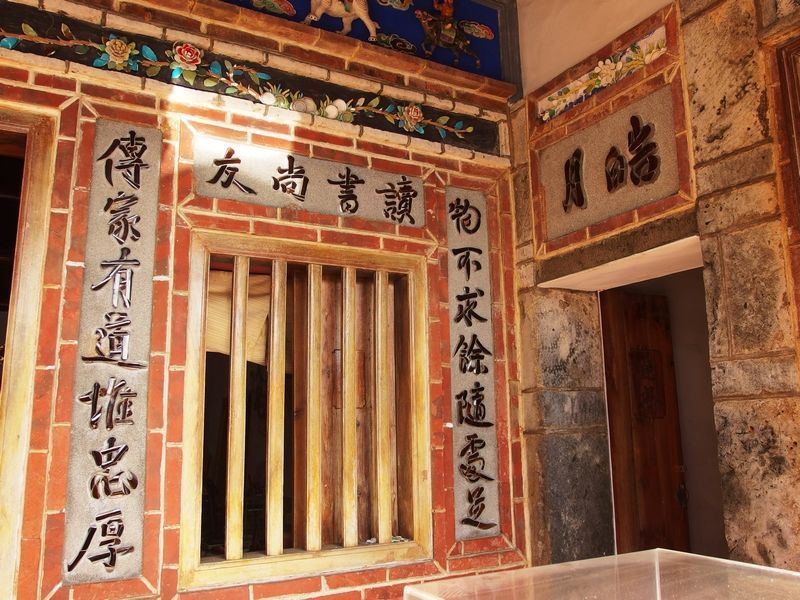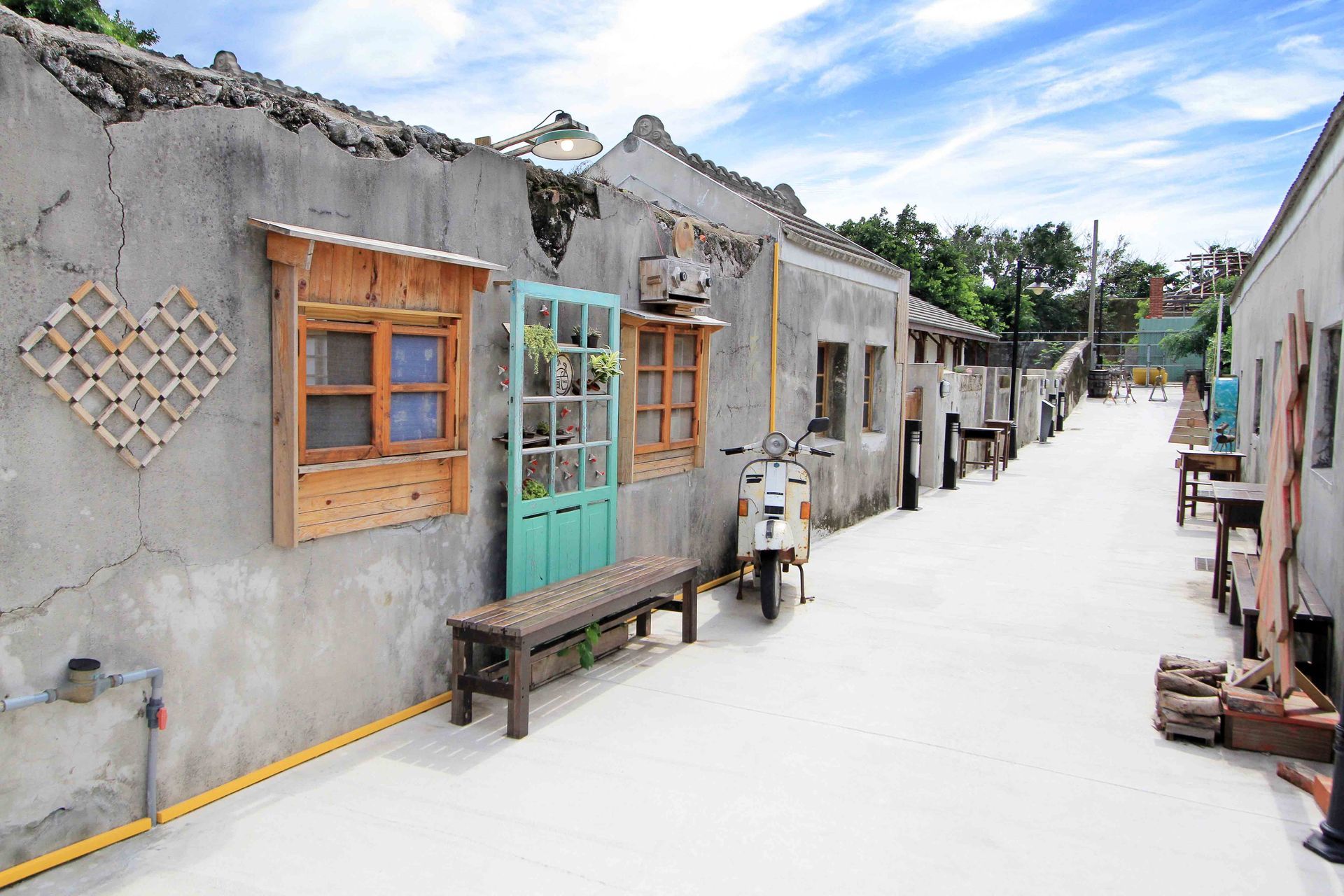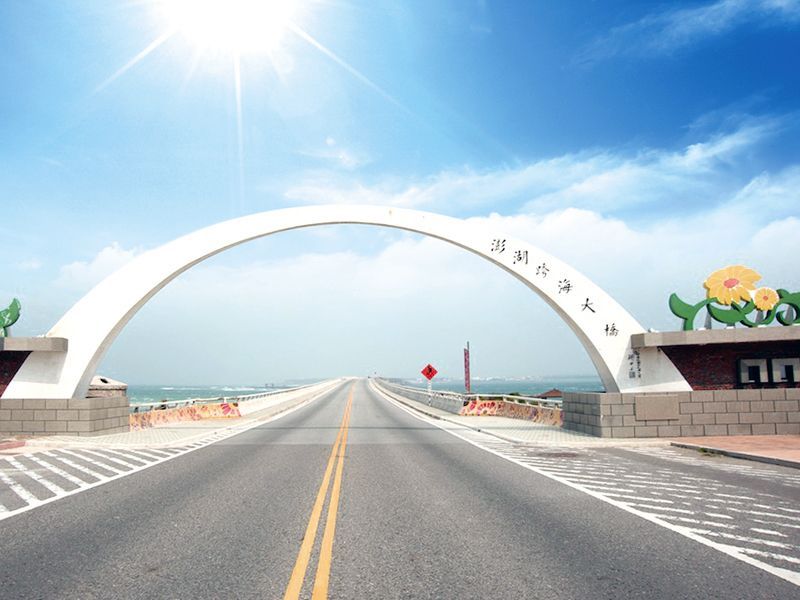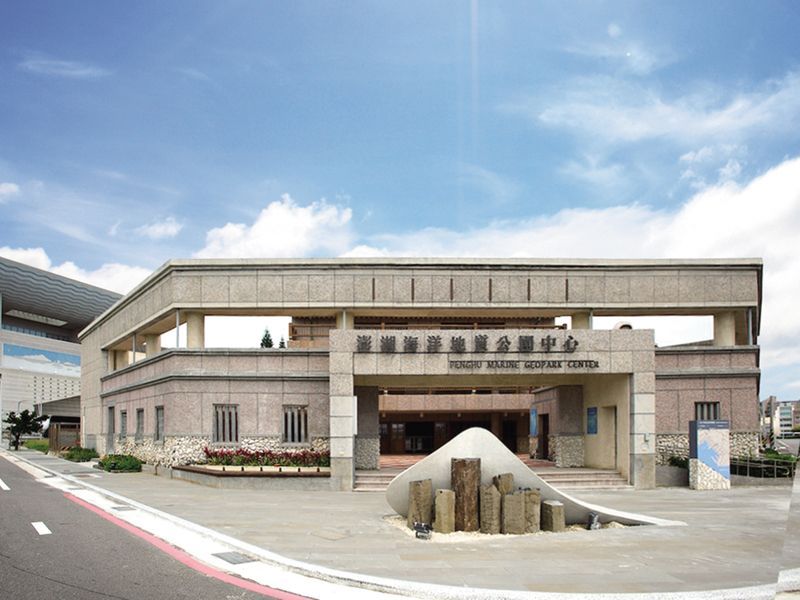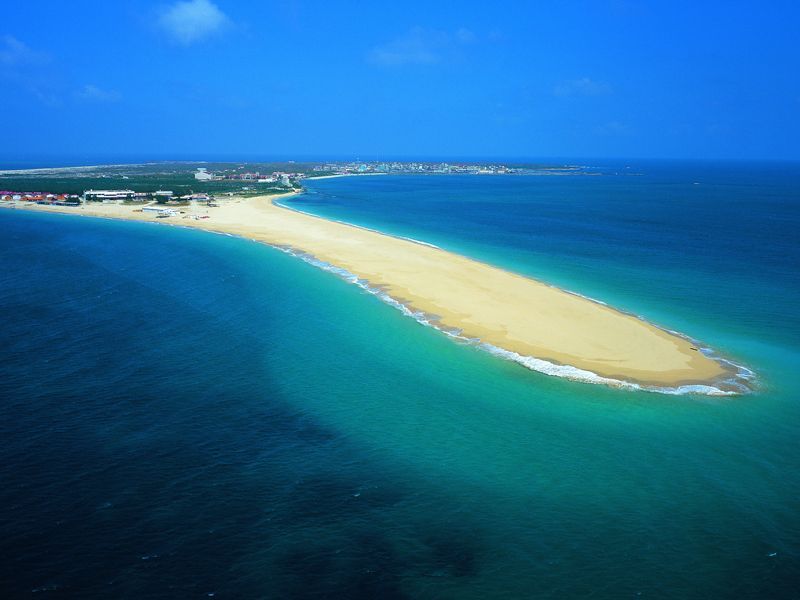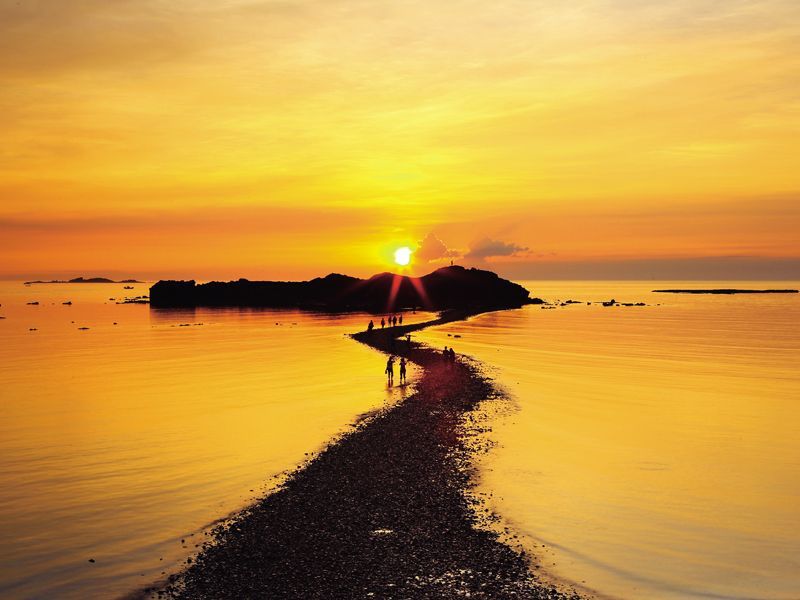Penghu style
An excellent choice to experience the ocean style will make you fascinated!
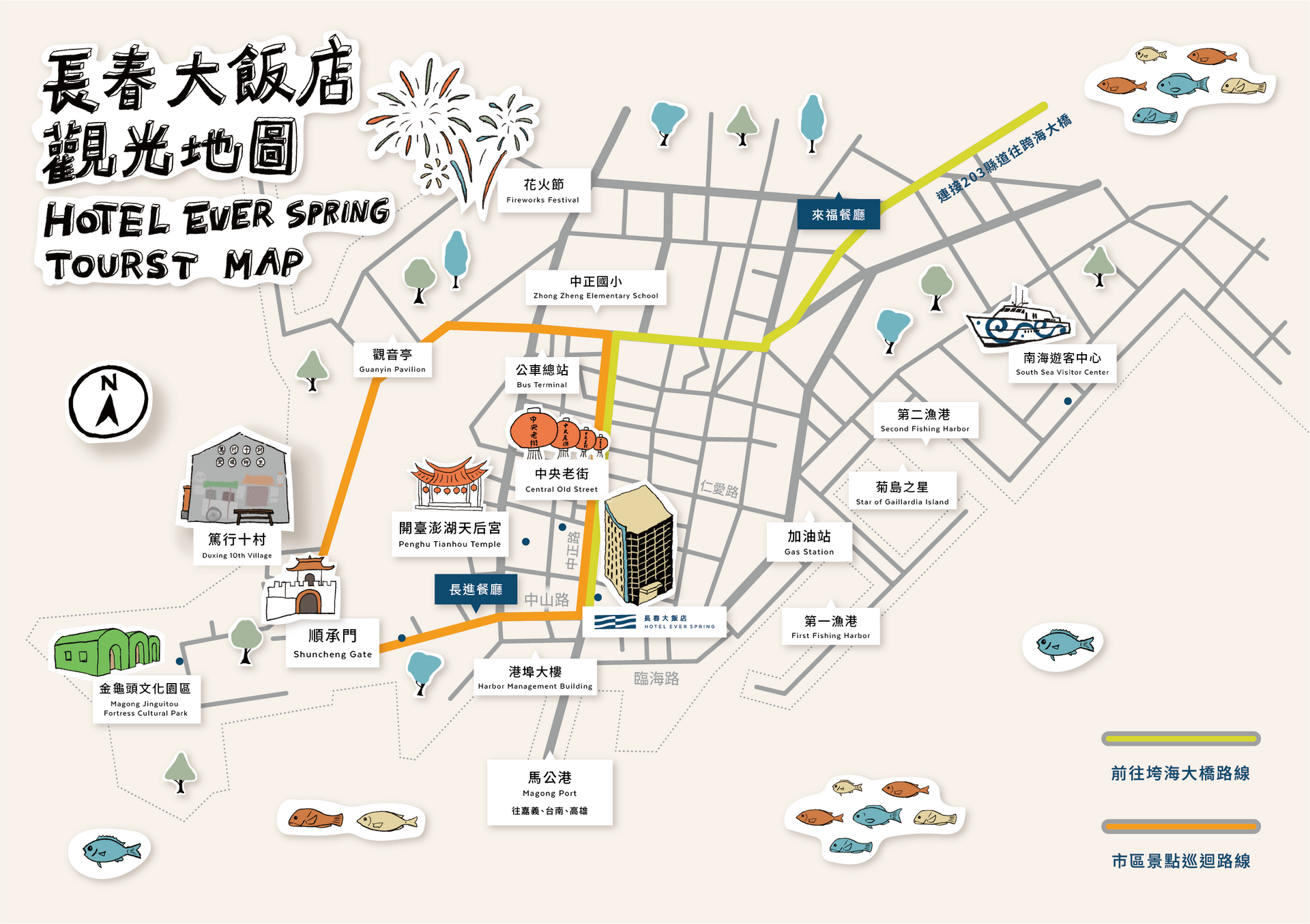
Penghu Thean Hou Temple
The first Mazu temple in Taiwan is located in Tianhou Temple in Penghu. Documentary records were first recorded in the 32nd year of Wanli in the Ming Dynasty. The temple names in the past include Tianfei Palace, Mother's Palace, Mother's Palace, and Mother's Palace, which were all names of places in Penghu at that time. Due to its special location between mainland China and Taiwan, Penghu became a relay station for foreign regimes to invade Taiwan. Later, the Qing government sent Shen Yourong and Shi Lang to Taiwan. Shi Lang defeated the Ming and Zheng defenders and captured Penghu. He believed that Mazu, the concubine of heaven, appeared to help. Emperor Kangxi was asked to confer the title of Queen of Heaven and a "golden face", so the name of the temple was changed to "Tianhou Temple" and the golden-faced Mazu was enshrined. It became the oldest temple in Tianhou Temple in Taiwan and a first-class historic site in Taiwan.
Button
Wangan Flower House
The Zhongshe Ancient House is located in Zhongshe Village, Wang'an Township, Penghu. Why it is called Huazhai is because the terrain here is surrounded by hills, just like the petals surrounding the heart of a flower. Then the ancestors were near the heart of the flower (Shanzai Weiding) The land was reclaimed to build a house, hence the name "Flower House". At that time, it was an ancient garden house with more than 100 southern Fujian buildings, which shows the prosperity and prosperity of that year. The original name of the ancient house in Zhongshe was "Flower House", and in the center of the flower house, there is a small hill. Residents call the hill "Hua Xin", which means the center of the flower house.
Button
Duxing Shicun Military Village Cultural Preservation Park
Duxingshi Village is the oldest military village in Taiwan. It was formerly the Penghu Island Fortress Headquarters and the Magong Heavy Artillery Battalion Officers’ Quarters during the Japanese occupation. After World War II, it was taken over by the Nationalist Government and turned into a dormitory for officers of the Penghu Defense Command, and named "Duxing Shicun". To preserve the unique cultural customs of the military village and the surrounding natural landscape, some of the buildings are now being renovated and planned to be hotels. The surrounding buildings and streets have also been restored and renovated. Landscape areas, shopping areas, many special attractions and shops have been planned, and some spaces have been renovated. The painted walls and layout, along with nostalgic tables, chairs, bicycles, motorcycles, etc., have made it a popular photo spot.
Button
cross-sea bridge
The Penghu Cross-sea Bridge connects Baisha Township and Xiyu Island, with a total length of approximately 2,494 meters. It was completed and opened to traffic in 1959. It was once the largest cross-sea land bridge in East Asia. It spans between Baisha Island and Yuweng Island. The water flow is very fast. The purpose of building the Penghu Bridge was actually to facilitate the communication between Magong Island and Xiyu Island, and to control the navigation of "Houtmen" ships. Therefore, the Penghu Bridge spans The sea bridge is a very important construction. After the cross-sea bridge was opened to traffic, it has become a very important network road in Penghu County, which has contributed greatly to promoting local prosperity.
Button
Central Old Street
Central Old Street is the earliest street developed in Penghu, so it is known as the "First Street". In 1973, Central Old Street was officially included in the "Specialized Historic Preservation Area". In 1983, residents of Penghu Old Street formed the "Penghu First Street Revitalization Association", which restored and renovated the old street with government subsidies. Show the prosperity of that year.
Button
Penghu Marine Geopark Center
It is located next to the Third Fishing Port, only one street away from the Magong City Office. The geological center has an introduction to the geopark, as well as Penghu's nature reserves, Maoyu Seabird Sanctuary, the distribution map of Qimei Stone Factory, Penghu geological chronology, geoparks around the world, Taiwan geoparks, stone life themes, The introduction to Penghu's characteristic landscapes, basalts, etc. is very rich and detailed.
Button
Fugitou Cave
Located at the southern end of the Fengkui Peninsula in Penghu, it used to be called the "Fengkuei Tail". The unique basalt columnar joints of Penghu are very well developed here, and they have been eroded by waves for many years, forming a long and narrow sea erosion gully. The bottom of the sea trench has been eroded into a sea cave. At the top of the sea cave, there is a small hole leading into the sea cave along the joint cracks. When the tide comes every week, the waves flow into the sea caves along the sea trenches. The air in the caves is squeezed hard, often making a "whoosh...whoosh..." sound. This sound is like the blast furnace used by people to make fires in the past. Therefore, the most famous name of Fenggui Cave is "Fenggui Listening to the Waves". It is the best place in Penghu County to listen to the sound of the waves!
Button
Jibei Shazui
The currents, waves and tides that erode the coast all year round move the fallen rock debris and gravel to appropriate locations and accumulate them. Over time, marine topography such as beaches, sandbars, sand spits or land-connected islands is formed. This is how the beautiful and special sand spit terrain of Jibei comes from. The Jibei Spit extends outwards and accumulates thousands of meters of sandy beach. It is elongated and covered with golden sand, so it is also called the "Golden Sand Spit" of Jibei. It is not only close to the blue The coast, with green coastal plants nearby, is very beautiful.
Button
Kueibi Mountain Geopark
Kuibishan Geopark includes Kuibishan and Chiyu. When the seawater is at low tide, a long S-shaped gravel road will be exposed. The two places are connected. It is a typical land-connected island topography. You can walk to Chiyu at low tide. island. On the right side of Fenhai Trail, you can see the wind-powered Nanliao Windmill. Walking along the S-shaped basalt gravel road, you can walk to Chiyu Island, which is connected to the mainland. It is also a good place to enjoy the sunrise and stargazing.
Button






